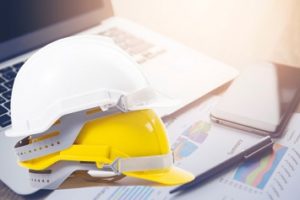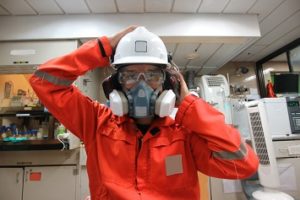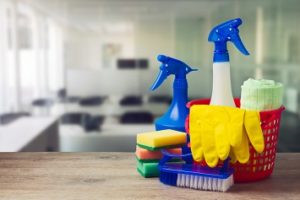In our most recent episode of EHS on Tap, host Justin Scace spoke with Lorraine M. Martin, the president and CEO of the National Safety Council (NSC) about the NSC’s recently launched Safe Actions for Employee Returns (SAFER) Task Force.
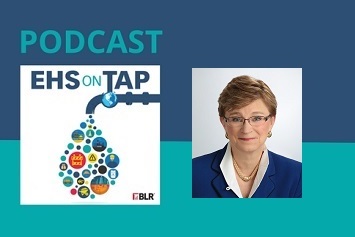
This episode was originally released May 14, 2020, and you can listen to the full audio recording here.
Justin Scace: Hello, everyone, and welcome to EHS on Tap. I’m your host, Justin Scace, Senior Editor of the EHS Daily Advisor. We hope that all of our listeners are staying safe and healthy. I am continuing to record from my home office, and today, we’re coming to you with a very timely episode. Many regions of the U.S. and also organizations, both large and small, are looking forward to reopening, but they want to ensure that they’re doing so in a way that will protect the health and safety of employees.
So on this episode of EHS on Tap, we’re going to be discussing the National Safety Council’s recently launched Safe Actions for Employee Returns, or SAFER Task Force, with none other than the President and CEO of the NSC herself, Lorraine M. Martin. Now, Lorraine has a very long and impressive résumé beyond President and CEO of the NSC, including such roles as U.S. Air Force officer, Executive Vice President and Deputy of Rotary and Mission Systems at Lockheed Martin, and Cofounder and President of the nonprofit Pegasus Springs Foundation.
So we’re very excited to have you here, Lorraine, and thanks so much for taking the time to talk about these important issues on EHS on Tap.
Lorraine M. Martin: Well, thank you for having me back.
Justin Scace: Absolutely, it’s great to have you. So to start off, could you give us some background on the SAFER Task Force? What is SAFER, and what are its main goals?
Lorraine M. Martin: Yeah, thank you for asking. SAFER was started by the National Safety Council just a few weeks back when it became really clear that, as you’ve shared, industry would need to start to come back online in various different forms and different speeds and in different timelines across our nation. So we formed a task force and an initiative to really help gather all of the best practices from across Fortune 500 companies, leading safety organizations, government agency, and public health entities to bring all of that together so we could aggregate it for organizations to have sort of a one-stop shop of getting the best advice, guidance, protocols, and toolkits for helping them navigate this.
There are a lot of folks that operate globally, large global international companies, that have had to go through some of these things in China, in France, and Italy. Instead of having everyone have to do trial and error to find our way through what works and how to do it, we felt it was really important that we get all of those best practices together and make them available. It’s been amazing to see. All of the sources of this information have just said, “I’ve got a playbook; you can have it—use the best pieces of it. I don’t consider this proprietary; I hope we can help others.” It’s been amazing.
Justin Scace: That’s great. So you mentioned all of these companies; what companies and organizations have joined the SAFER Task Force, and what actions do these organizations take in support of the goals of SAFER?
Lorraine M. Martin: Yeah, so the first and foremost is to provide us their best practices. So that’s their first action, and I’ll talk about it with you in a moment. But it’s a lot of the big household names. We’ve got over 70 organizations now from industry and leading safety experts. Some of the government organizations are participating in supporting us, as well, like the CDC and NIOSH.
We’ve got the U.S. Chamber of Commerce, which can connect into then. It’s pretty much all of our industry across the nation—people like U.S. Steel, McDonald’s, BNSF, United Rentals, and Cummings, just to name a few. If anyone’s interested, they can certainly go on the website. They’re all listed there, and we’d still love to have more players if you’re interested in contributing and helping.
What the role is, first and foremost, is to share best practices as they have them and then to participate in our task force as we build sort of a framework and then a set of playbooks that can be used by industry as they go to implement all of the protocols and best practices. So these will be sort of ready-to-use implementation guides for all of the different aspects of the safety issues in a workplace.
So the task force is now split up into subgroups, and they’re working on the products. We put the framework out this week, and some of the playbooks will now be rolled out in the next 2 weeks across May, and they’ll be updated continually as we get more information.
Justin Scace: So as of this recording, it’s been about 2 weeks since the task force was first announced. So you’ve told us a little bit, but what’s been accomplished so far? What further action or deliverables—you were talking about playbooks just now; what can we expect in the coming weeks?
Lorraine M. Martin: Yeah, so the first thing that was put out for the community is this overall framework of looking at all the things that are needed to ensure safe returns of employees. We need to address some organizations that have gone totally remote, so it’s bringing employees back in a careful way, then other industry sectors that have been operating but perhaps under sort of a reduced workload, or perhaps if you think of a restaurant that’s doing takeout and delivery now and has to return to increased operations with dining room support. So, it’s all of those different sort of operational navigations.
But we are specifically looking at a pretty broad set of guidelines in the framework—all of the physical environment things like the cleaning and the PPE, as well as mental health-related considerations for your employees and your customers, as well as the medical considerations having to do with temperature-taking and other things regarding how we think the disease will progress over time and potentially recur and trace everything.
So the medical conditions, as well as communications needs, and other external factors like transportation related to business, people getting to work, and then finally, employment and HR needs. So we have lawyers and HR professionals on the task force, as well. So we’ll be covering all of those, which is a little broader than what most people think. They think of clean the workplace, put the PPE on, which is all required, but there’s a lot more to doing this and doing this well in a way that we can continue to keep the economic engine continuing to roar, as opposed to kind of fits and starts. So all of those recommendation areas will be further defined into playbooks. Again, those are going to be what we’ll be posting over the next couple of weeks.
Justin Scace: OK, great. Now I assume that timelines or protocols for reopening businesses will differ across the country, depending on the region or the type of business. Is this assumption accurate? And if so, how do you expect these timelines will differ?
Lorraine M. Martin: That’s a great question. I do think it is what everybody is really watching right now because a lot of the decisions now at the state and governor level of what they feel is appropriate for their state, for how the disease has progressed, of where they are and getting to the other side of the curve, as we’ve all talked about. Usually in a public safety challenge, you want some uniformity, and you want kind of everyone doing the same thing on the same timetable for preventive efforts. This one is going to be a lot more variable and maybe even patchworky, depending on what’s going on, not only in your state, but maybe in counties.
You’ve seen it in Illinois, where the governor just recently sort of outlined areas of the state of how to deal with that because it’s not all uniform of how it’s even evolved within a state. So some of the retailers are returning and some pickup and delivery services and nurseries. So people are being very strategic and specific about what feels right for them now, given what’s going on in their locale and then how that relates to the given businesses and how they operate.
Which is really appropriate because we’re still learning every day, not only about what’s going on in each location, but specifically how the disease progresses, how it gets transmitted, and how we’re going to prevent it from recurring. So much of that is still, I wouldn’t say unknown, but still being discovered for us that it is prudent that the timelines and the protocols be very specific to not only the industry, but whatever the dynamic is geographically. That’s complicated.
That’s one of the reasons we will have, on the website also, quite a bit of geographic information for folks over time to be able to see what’s going on in each area. There’s several places—Johns Hopkins and others—and we’ll try to kind of collate that, not only to what’s going on, but then what the governors are recommending in those areas, to try to really bring all of that together so folks can begin to peruse it.
Many of our industries, most operate in more than one county certainly and many of them in more than one state, and certainly, many of them are national-based organizations. So they’re going to have to be able to navigate this complexity in a way that, right now, seems a little daunting.
Justin Scace: Yeah, absolutely. So reopening, it’s been a subject of sometimes heated debate. But from a purely safety standpoint is current discussions that we’re having focused on the right things. What’s at stake with the decisions that will be made as a result of these discussions?
Lorraine M. Martin: Yeah, I’ll start with the beginning of your question. It is a heated debate, but it is the right time to be having that debate. The conversation about how to open and reopen doors, or open them wider if they have been doing business, is very important to do right now, even if some states aren’t at that point, because we need to be able to have the come-back-to-work plans in place before we’re doing that, just like you have to have crisis planning for any good preparedness plan in your pocket ready to go even before the crisis happens. So it is the time to be talking about this.
It’s really important that we look at all of the different aspects of it. As I said before, not just the physical, but the mental and the medical communications and HR. All of those things need to be examined because people’s lives are at stake, first and foremost, and then the livelihood, the engine of our economy.
For EHS professionals, this is one of the first times, I think, that we’ve realized that safety of the employees at work is at the core of our ability for our country and our economy to move forward. As such, this is the issue that we need to get to the other side of. Being able to have plans that enable people to come back to work safely is at the core of that. So EHS professionals can stand tall; this is our moment here to really help our country, our nation, and the people we support.
The other thing that I’ll say regarding this is a lot of us talk about return to work, and for you, and for me, I’m working from home. A lot of office workers were able to do that, but there are many employees that have been working all the way through this. We know our heroes in the medical and health profession, first responders, and grocery store workers, to name just a few. We did a survey early on of all of our members; we have 16,000 members in the National Safety Council. Seventy-two percent of them still had workers in their traditional work environment doing what they needed to do and tried to find a way to do that safely.
So it’s really important that we understand that while we’re talking about return to work, it’s also navigating those that are already at work and as this evolves. I will tell you one of the most important things, and you asked what are the considerations, is going to be testing. It’s a critical piece of being able to bring employees back, being able to, when something spikes or we have a recurrence, know where it is and how to address it and to roll back and then to roll forward.
Especially since we’ve now understood, from the medical professionals, that you can be asymptomatic with this, carrying the disease, not know that you’re sick. So your temperature or your physical well-being that day really is not an indication of whether or not you should be safe to come to work for others’ safety. So, testing is at the core of this.
Just recently, about 50 companies in the National Safety Council drafted a letter to the White House Task Force making sure that employers are on the list of the organizations that will be getting testing kits and understanding how the protocol will work as we go forward. Really, really critical to reopening or enabling operations to continue to perform and to extend their operations.
Justin Scace: Alright, excellent. So when it comes time to reopen those doors, what are the top things that organizations will need to consider?
Lorraine M. Martin: They’re really the basics that we’ve all been learning about on the news. For those who are operating in the first and foremost is to make sure that the environment is safe for them to come to—so stressing the sanitation activities. If you’re coming to a workplace that’s more of an office and conference rooms, cleaning and understanding what you’re going to do in the common areas, turnstiles, cafeterias, is really important for us to focus on and make sure that our employees are still part of this—not only that they feel safe, but that we have the ability for them to say, “I don’t feel well, or I have someone I’ve interacted with.” Have the right protocols and policies in place to enable that to be an easy answer for the employee and for the workplace.
We’re still going to, I’m sure, be restricting travel into high-risk areas, and we’ll have to navigate that, as it could be even a national travel, whether you’re going to a high-risk county or state; those kinds of things are going to be important for us to understand. Then again, just looking at your workplace, understanding the physical distancing opportunities you have or, if you don’t, how you’re going to handle that. It’s really the basics that people need to have first and foremost, then after that, other things that we’ve talked about, like mental health for your employees, your HR policies, and everything that needs to go around that.
Justin Scace: Great. So you mentioned this a little bit before: This is the time for EHS professionals to really shine. So how can the EHS professionals in our audience support their employees at this difficult time, and what should they individually do to ensure that when we do return to work, we’re returning as safely as possible?
Lorraine M. Martin: Yeah, we are in the thick of this, EHS professionals, right here, right now. The foremost that they can do is to be helping their organizations follow the federal guidelines, get on the SAFER website or whatever resource that they can find relevant for their business, and make sure that they’re getting the best-possible recommendations for their organizations. Most companies right now are having very frequent sort of pandemic strategy sessions. Mine is daily with my team and my EHS professionals at the table every day.
So bring your voice; be brave. If you need to stand tall on an issue, that’s going to make sure that your workforce is safe. Lead by example by not only following the federal guidelines yourself but if you’re sick or if PPE is required for your environments to never not have it and have it on. I was laughing with someone the other day; when we think about PPE for our profession, everybody knows what that is—steel-toed shoes and your safety glasses and all those things. Now PPE—every single person in this world, not just the country, knows that term.
So leverage your best practices of understanding why that’s so important and that you don’t go to a jobsite without what’s deemed appropriate for the safety of your workforce, including now things like masks and gloves or whatever the environment demands. So make sure that it’s on hand; make sure that if it’s not, you’re working with your leadership team to get it there. I know that’s a challenge for some work environments.
But make sure, one, that you lead, that your voice is heard, that you bring all of the years of your expertise of understanding safety and risks and hazards to this public health crisis. Just know that you also have people to support you; reach out to your professional groups and other resources so that you can do the best that you possibly can at this time when it is our moment to shine.
Justin Scace: Yes, absolutely. Now we’re going to be sure to include a link to the SAFER website on the webpage for this episode. Is there anything that you’d like to say about how you can find these resources, in addition to the links that they can find there?
Lorraine M. Martin: Yeah, so nsc.org/safer is where you’re going to find all of these resources. They will continue to be updated daily, so please continue to revisit after you get materials, not only because the task force is creating more materials from all of the best practices but because things change. We also have links to the CDC, World Health Organization, and some of the best and most current recommendations. That’s updated daily, as well, so I hope that can be a resource to you.
If you have something to add, there’s a place there, too, to either join the task force, if you’d like, or to contribute some materials that you think might help the rest of the community. So one stop there to the front door of nsc.org/safer.
Justin Scace: Alright, great. That’s excellent. Thanks so much. So let’s hope that we find our way back to something that resembles normal sooner rather than later but, more importantly, that we’re doing so in a safe way. So thank you again very much, Lorraine, for being with us today on EHS on Tap.
Lorraine M. Martin: Thank you, and thank you to every EHS professional as they’re helping us to navigate this. We are indebted to you—a huge thank you.
Justin Scace: Yes, absolutely. Thank you to our listeners for tuning in today. Be sure to keep an eye out for new episodes of our podcast, and keep reading the EHS Daily Advisor to stay on top of your safety and environmental compliance obligations, get the latest and best practices, and keep your finger on the pulse of all things related to the EHS industry. Until next time, this is Justin Scace for EHS on Tap.
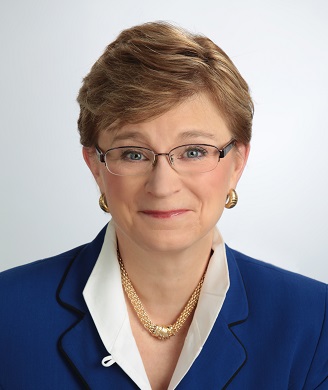 Lorraine M. Martin is passionate about her commitment to helping people live their fullest lives. She has more than 30 years of experience leading and developing global and international businesses, including as a Fortune 500 senior executive, with a successful track record in both civic and corporate roles. Lorraine M. Martin is passionate about her commitment to helping people live their fullest lives. She has more than 30 years of experience leading and developing global and international businesses, including as a Fortune 500 senior executive, with a successful track record in both civic and corporate roles.
Over her career, she has led global aircraft and complex system development and manufacturing, always with a focus on safety for the employees and for those who used the products, often in high-consequence environments. Martin is also the cofounder and president of the Pegasus Springs Foundation, a nonprofit organization dedicated to providing opportunities for educators, students, and community members to collaborate on learning models. She is an enthusiastic advocate for school, community, and national resource engagement. As a proud champion for advancing women and girls in STEM, Martin recently was named among STEMConnector’s 100 Corporate Women Leaders and frequently lectures on core issues related to the cause. She has worked with numerous organizations in support of this mission, including Girls Inc., Girls Who Code, and Blue Ribbon Schools of Excellence, where she also served on the board of directors. In addition, she has served on the boards of INROADS and Big Brothers, Big Sisters of Orlando. Martin is honored to have served as an officer in the U.S. Air Force, where she held various leadership positions for software-intensive technology and development programs. She has earned a master’s degree in Computer Science from Boston University and a bachelor’s degree in Computational Mathematics from DePauw University. |
EHS on Tap is an environment, health, and safety podcast by BLR’s EHS Daily Advisor. On each episode of EHS on Tap, our host will discuss emerging legal, regulatory, and policy issues with industry experts and the impacts to everyday safety and environment professionals. EHS on Tap topics run the gamut of contemporary issues facing EHS managers and professionals today.
Download the podcasts on iTunes here, and also be sure to visit our SoundCloud page for a full listing of all of our episodes!

